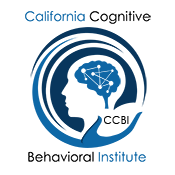The idea that anger is something that can be “taken away” from one’s life is to be in a fantasy world of anger management. We are born with anger and it can’t be “taken away” but rather it can be managed effectively, so that it does not interfere in a negative way, in one’s life.
- This idea that anger can be fixed with a singular intervention oversimplifies the complex nature of “managing it appropriately”.
- Anger is a perfectly valid response to overwhelming life experiences, does not render individuals broken, but rather as responding to something we are born with to help us become aware of its reason for showing up in our lives and then to do something about whatever that is.
- In anger management healing, the focus should be on recalibrating the memory of negative responses learned and acknowledging what triggered our sympathetic nervous system, to better manage our anger.
There is a question that I have gotten increasingly often over the last few years. It pops up in a couple of different versions, but they all look something like this: Will anger management fix my out of control anger? Or: How many sessions of anger management will it take before I am no longer angry?
That question—in whatever version it comes—reveals two critical mistakes in our thinking about anger and the management of it.
The first critical mistake in our thinking is the idea that to be angry is to be broken in some way that requires a fix. It is an attempt to render a very complex human experience into something much simpler, like a bone break. To be very clear, anger causing experiences can absolutely leave us with crushing reactions that can steal our peace.
But to be angry at a negative experience (trauma, pain, death, abuse, etc., is the perfectly right response to certain life experiences. Specifically, those life experiences that overwhelm our sympathetic nervous system and we can’t because we have not been taught to manage on our own. It is the physical symptoms of anger, the “triggers” and “learned responses” and our thoughts about a perceived “disrespect” that need recognizing, recalibrating and having access to a “toolbox” of alternative choices is the best solution. After all, one size does not fit all in the management of our anger.
This brings us to our second critical mistake in our thinking about anger and responding to it, which is built on the first. When we render our anger experiences into broken bones, we naturally assume that there is an arrival point at which we can declare ourselves healed. Ten weeks and the cast comes off, and we can resume our normal lives, correct?
Anger responses are not like broken bones, and healing from anger trauma’s is not like when you get your cast taken off and move on with your life. Healing from trauma is a long and winding life-long path and changing our anger responses is an “every day” process of practice until we make it “automatic”. Practice makes progress and progress makes people happier.
Let’s trade metaphors. Healing from trauma causing anger responses is a lot more like building a house that you live in for the rest of your days. What do you need when you are building a house? You need a toolbox. And not just that, you need to know how to use those tools. This is where working with an anger management specialist is important.
Because you could buy all the fanciest tools at Home Depot, but if you don’t know how to use them, well, you’ll end up with not much of a house. If you know how to use those tools, well, you don’t just know how to build but also how to improve and repair.
Traumatic anger causing experiences cannot be easily integrated into our brain filing systems the way that other experiences can. So, they stick out of the filing cabinets and cause symptoms.
When a familiar experience happens, our brain will have us relive past experiences similar and have us respond in the way we did before – so lots of adults are responding the way they did as a child. Telling your experiences and responses to those experiences with an anger management specialist who can help you to organize, categorize, and assign meaning to the anger causing memory and help you feel through some of the overwhelming emotions can help your brain put responses and reactions in proper perspective and place. While many of our relationships have therapeutic aspects, this work is best done with a certified anger management specialist and not just any therapist or psychologist who is not trained.
In general, look for someone who has a background in anger management, abuse, and trauma and might practice modalities that include anger management, psycho-educational work, dialectical behavioral therapy (DBT), Cognitive Behavioral Therapy, acceptance and commitment therapy (ACT), internal family systems (IFS), or narrative exposure therapy (NET). This “tool box” of mixed “tools” can help you manage your anger responses and turn them from negative into positive. Anger can work for you if you know how to manage it and not let it define you – you define it!!!
While you work with the anger file, another set of tools you can gather and begin learning is those that help you recalibrate your sympathetic nervous system responses. Since our bodies are along for the ride, anger does not restrict itself to our thought processes. We have physical responses and emotional responses affecting our behavioral and attitude responses.
Here’s the good news, though: If we can become aware of our anger and responses to it systems and how they work together, we can intervene in our dysregulated systems of anger responses and learn how to regulate them. T
Top-Down Regulation Tools
One of the things that leads to dysregulation in the body is an over-active alarm system in the brain. When the amygdala sets off an alarm because it is reliving a trauma, it sends your body into an intense stress response. This is great when you are in danger and really inconvenient when you are just trying to get through a workday. The good news is that you can intervene by manually redirecting your brain function, which in turn slows down the stress response.
There are many ways to do this, but here are two quick tools you can start to use right now:
- Tetris—when the game makes a demand on your visual-spatial system, which is in your prefrontal cortex, blood flow and electrical activity are forced into that area of your brain and away from the alarm system. This effectively turns the alarm system off, sending a message to your body that it’s ok to calm down.
- Expressive Writing—Writing about emotional anger causing experiences in a structured way has been shown to have therapeutic benefits by engaging cognitive processing and facilitating emotional regulation.
- One of the reasons this works is because you are actively engaging the rational parts of your brain while processing emotions. If you’re feeling overwhelmed, take 20 minutes to free-write. Don’t edit, pause, or even read back—just write.
There are also several therapeutic methods that are based on top-down regulation. Cognitive behavioral therapy (CBT), biofeedback, and mindfulness are a few examples.
Bottom-up Regulation Tools
Bottom-up regulation is when you use the body to regulate the responses in the brain, which can then intervene in the stress response system. The quickest way to do this is to flip the switch from the sympathetic nervous system (responsible for upregulating your system to prepare for danger) to the parasympathetic nervous system (responsible for the rest and digest response).
One of the most reliable ways to activate the rest and digest response is by activating the vagas nerve. The nerve wanders from your brain stem through your abdomen and touches nearly all your major organs on the way down. There are many ways to activate the vagus nerve and trigger a parasympathetic (calming) response in the body. Here are two quick tools you can use right now:
- Diaphragmatic Breathing–One of the places where the vagus nerve is the most sensitive is right in front of your diaphragm. Breathing into it pushes the vagus nerve. To practice diaphragmatic breathing, simply inhale deeply through the nose, pushing the breath into the belly (rather than the top of the chest), allowing the abdomen to expand, and then exhale slowly through pursed lips, constricting the abdomen.
- Cold Water–Cold water activates the vagus nerve through a response known as the mammalian dive reflex. When exposed to cold water, particularly on the face, the body initiates a series of physiological changes to conserve oxygen and energy. The vagus nerve is stimulated, leading to a bradycardic response or a slowing of the heart rate, as well as other autonomic adjustments that promote a state of calm and relaxation. So, splash your face with cold water. If that’s not possible, you can also hold an ice pack to your chest or run your hands under cold water.
There are also many therapeutic tools that are based on bottom-up regulation. Somatic experiencing therapy (SET) prioritizes the bottom-up approach. Some other therapies that also do this are trauma-sensitive yoga (TSY), eye movement desensitization and reprocessing (EMDR), brainspotting (BSP), equine-assisted psychotherapy, and dance and movement therapy. Let’s not forget laughter therapy is one of the most highly effective tools at our disposal and all the amazing components it provides in managing our anger.
So, instead of looking for which of these many tools and many interventions will be the cure-all for your anger, consider adopting a toolbox approach instead because managing anger is more like building yourself a house to live out the rest of your days in than it is like mending a broken bone from retelling tools that address the cognitive aspects of trauma to top-down regulation methods like cognitive behavioral therapy and mindfulness, and bottom-up regulation techniques, such as diaphragmatic breathing and cold-water exposure activating the vagus nerve. Each tool does something a little different. Understanding and utilizing this toolbox will not only help you manage your anger, but will also prepare you for other stressors that life may have in store for you.
By Kathie Mathis, Psy.D, D.D., CAMS-IV, CBIF, CDVA, CSAC, CSOF, PI, CLC, CCAC, CHTA, CHC, CLCC, CEO CALIFORNIA COGNITIVE BEHAVIORAL INSTITUTE, FORMER PRESIDENT OF CALIFORNIA ASSOCIATION OF ANGER MANAGEMENT PROVIDERS

